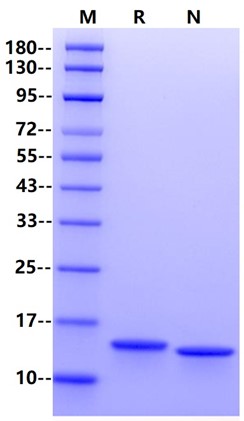



 下载产品说明书
下载产品说明书 用小程序,查商品更便捷
用小程序,查商品更便捷



 收藏
收藏
 对比
对比 咨询
咨询15.5 kDa
15.5 kDa


15.5 kDa










Interleukin-2 (IL-2) is an interleukin, a type of cytokine immune system signaling molecule, which is a leukocytotropic hormone that is instrumental in the body natural response to microbial infection and in discriminating between foreign (non-self) and self. IL-2 mediates its effects by binding to IL-2 receptors, which are expressed by lymphocytes, the cells that are responsible for immunity. Mature human IL-2 shares 56% and 66% aa sequence identity with mouse and rat IL-2, respectively. Human and mouse IL-2 exhibit cross-species activity. The receptor for IL-2 consists of three subunits that are present on the cell surface in varying preformed complexes. IL-2 is also necessary during T cell development in the thymus for the maturation of a unique subset of T cells that are termed regulatory T cells (T-Regs). After exiting from the thymus, T-Regs function to prevent other T cells from recognizing and reacting against "self-antigens", which could result in "autoimmunity". T-Regs do this by preventing the responding cells from producing IL-2. Thus, IL-2 is required to discriminate between self and non-self, another one of the unique characteristics of the immune system.

Reconstitute at 0.1-1 mg/ml according to the size in ultrapure water after rapid centrifugation.

· 12 months from date of receipt, lyophilized powder stored at -20 to -80℃.
· 3 months, -20 to -80℃ under sterile conditions after reconstitution.
· 1 week, 2 to 8℃ under sterile conditions after reconstitution.
· Please avoid repeated freeze-thaw cycles.
1.Pol, J. G. , Caudana, P. , Paillet, J. , Piaggio, E. , & Kroemer, G. . (2020). Effects of interleukin-2 in immunostimulation and immunosuppression. The Journal of Experimental Medicine(1), 217.
2.Kolios, A. G., Tsokos, G. C., & Klatzmann, D. (2021). Interleukin-2 and regulatory T cells in rheumatic diseases. Nature Reviews Rheumatology, 17(12), 749-766.
3.Zhang, Y., & Su, J. (2023). Interleukin-2 family cytokines: An overview of genes, expression, signaling and functional roles in teleost. Developmental & Comparative Immunology, 104645.

参考图片
2μg (R: reducing condition, N: non-reducing condition).
Measured in a cell proliferation assay using CTLL2 cells, the EC50 for this effect is 0.1 ng/ml.
Anti-His antibody Immobilized on CM5 Chip captured IL-2R alpha/CD25 His Tag, Mouse (Cat. No. UA010324), can bind IL-2, Human (Cat. No. UA040108) with an affinity constant of 20.57 nM as determined in SPR assay.
Anti-His antibody Immobilized on CM5 Chip captured IL-2R alpha/CD25 His Tag, Human (Cat. No. UA010367), can bind IL-2, Human (Cat. No. UA040108) with an affinity constant of 13.94 nM as determined in SPR assay.
Anti-His antibody Immobilized on CM5 Chip captured IL-2R beta/CD122 His Tag, Human (Cat. No. UA010372), can bind IL-2, Human (Cat. No. UA040108) with an affinity constant of 0.32 μM as determined in SPR assay.




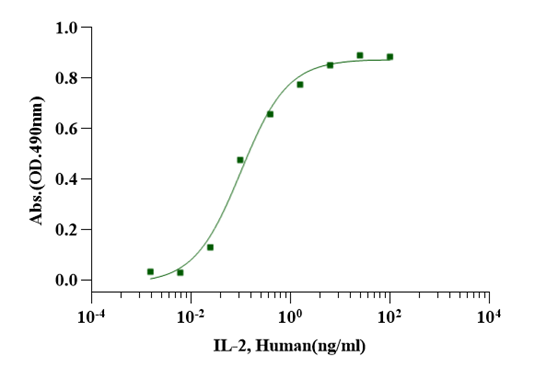
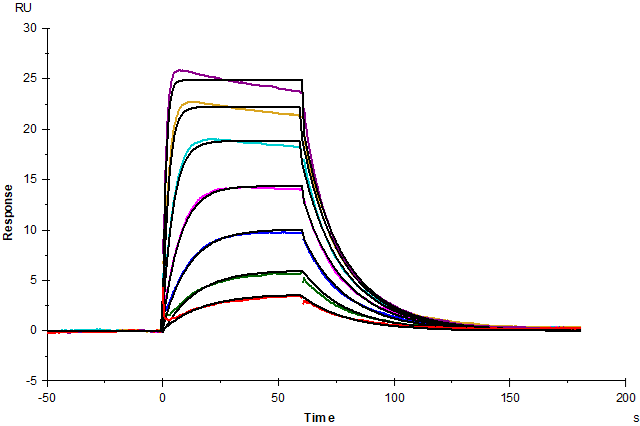
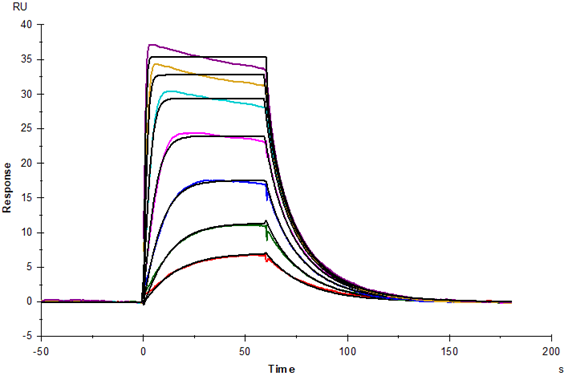
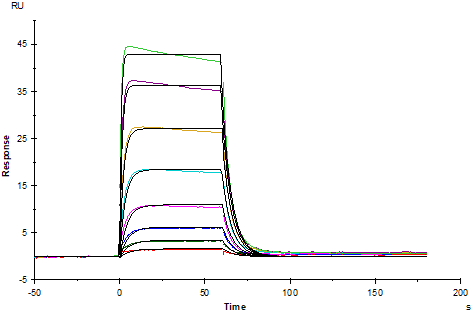
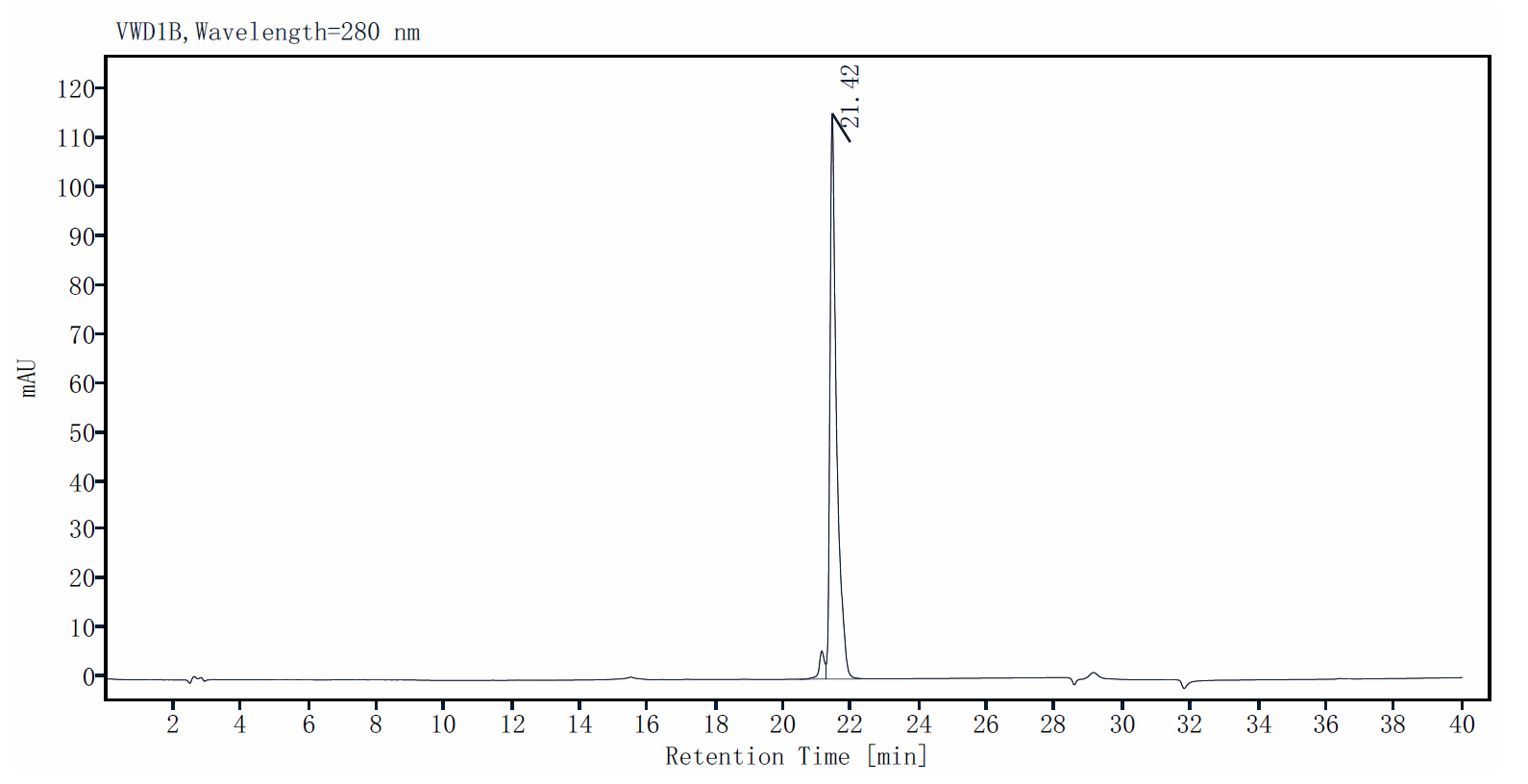

 危险品化学品经营许可证(不带存储) 许可证编号:沪(杨)应急管危经许[2022]202944(QY)
危险品化学品经营许可证(不带存储) 许可证编号:沪(杨)应急管危经许[2022]202944(QY) 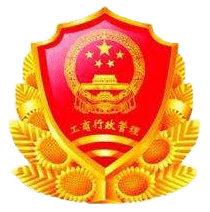 营业执照(三证合一)
营业执照(三证合一)